The Register
THE MAGAZINE FOR ONTARIO’S PUBLIC SCHOOL PRINCIPALS & VICE-PRINCIPALS


THE MAGAZINE FOR ONTARIO’S PUBLIC SCHOOL PRINCIPALS & VICE-PRINCIPALS






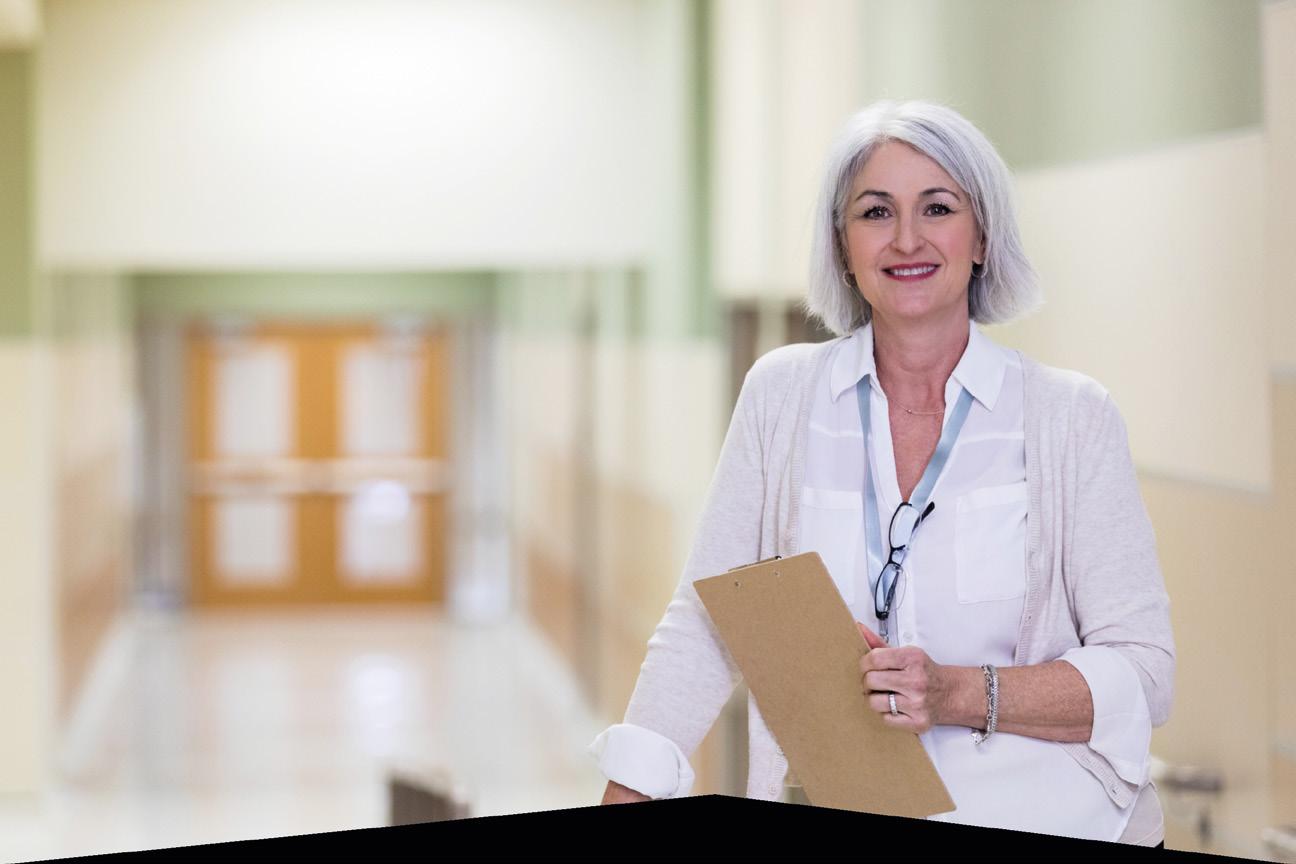
















Our new organizational structure will better help us reach our goals

Throughout 2023–24, we engaged our Executive, Provincial Council and Members in a consultation process that culminated in the approval of a new By-law document. Our revised Constitution, which will become effective in the latter half of 2025, is designed to support our organization for the future.
Currently, our Board of Directors, also known as Provincial Council, consists of 69 local representatives and a ninemember Executive. The new model (see right) will include 15-20 Directors, who will be responsible for overseeing the OPC’s strategy, finances and operations to ensure success.
The new model also includes a General Assembly (GA), which will meet three times a year for learning, network-
ing and providing insight into local issues. Representatives at the GA will be elected locally, similar to our current Provincial Councillors. They will also approve the annual budget and audited financial report.
Until the new By-law takes effect, Executive, Provincial Council and our staff will focus on reviewing, updating and developing policies to align with the new model.
A governance review Q and A is available on our website. More information will be shared in the coming months.

Dr. Nadine Trépanier-Bisson ntrepanier@principals.ca

Ontario Principals’ Council
20 Queen Street West, 27th Floor
Toronto, Ontario M5H 3R3
Tel: 416-322-6600 or 1-800-701-2362
Fax: 416-322-6618
www.principals.ca
Email: admin@principals.ca
The Register is published digitally three times a year and printed once each fall by the Ontario Principals’ Council (OPC). The views expressed in articles are those of the authors and do not necessarily represent the official position of the OPC. Reproduction of any part of this publication must be authorized by the editor and credited to the OPC and the authors involved. Letters to the editor and submissions on topics of interest to the profession are welcome. Although paid advertisements appear in this publication, the OPC does not endorse any products, services or companies, nor any of the claims made or opinions expressed in the advertisement.
Peggy Sweeney, editor
Daisi Dina, assistant editor
Ruth Hanley, proofreader
Nadine Trépanier-Bisson, business manager
Art Direction and Design: Fresh Art & Design Inc.
Advertising: Marlene Mignardi advertising@principals.ca
Would you like to contribute to The Register? Do you have an article, feedback or ideas? Our editorial team would like to hear from you. Deadlines for submissions are listed below. Go to the OPC website under The Register for further submission and writing guidelines and considerations. Send your articles, reviews, thoughts and ideas to ddina@principals.ca All submissions are subject to review and selection by the editorial committee.
Content Due May 1
October 1
February 1
For edition releases in October, the content is due May 1. For edition releases in February, the content is due October 1. For edition releases in May, the content is due February 1.
Edition Release October February May
The Register is the proud recipient of the following awards:


On July 1st, we welcomed our 2024–25 provincial president, Alison Osborne, for her one-year secondment from the Kawartha Pine Ridge District School Board.
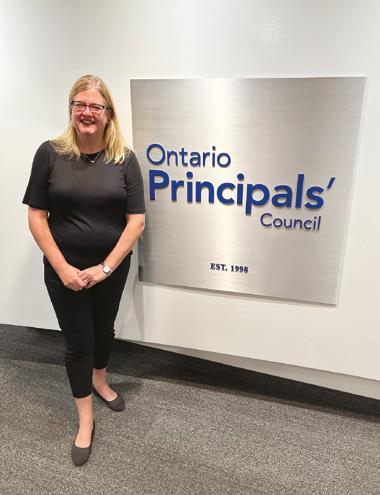


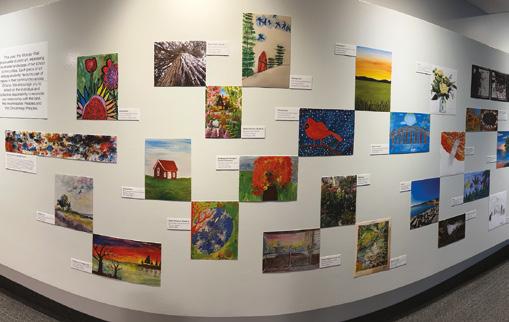
Earlier this year, principals and vice-principals contributed student artwork for the Wonder Wall at the OPC office in Toronto. The artwork celebrates the environmental diversity of Ontario.
A hybrid Provincial Council meeting was held from May 2nd–4th.
On May 3rd, Dr. Jody Carrington led an interactive learning session on coping with staff shortages, stress and resilience (L-R Patsy Agard, Dr. Jody Carrington, Ralph Nigro, Alison Osborne).

On May 1st, OPC staff were in Thunder Bay for a Leading Mentally Healthy Schools resource session with school board teams in northwest Ontario. This session was delivered in collaboration with School Mental Health Ontario and the Catholic Principals’ Council of Ontario.




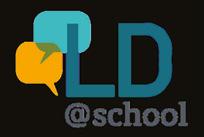



Over the last few years, the emphasis on human rights in education has significantly intensified in Ontario, across Canada and around the globe. We have a legal and moral responsibility as education leaders to create spaces of inclusion and belonging where meaningful learning takes place. Our Statement on Human Rights solidifies our stance and intensifies the continued work to realize an inclusive and barrier-free education system that is centred on serving students, families and the community.
The full range of learning opportunities is available on the Professional Learning webpage, and we invite you to explore the variety of topics and options for engagement. To keep up to date with what is coming and new opportunities, sign up for our weekly Professional Learning Opportunities email.
Our Professional Learning department is committed to supporting the ongoing growth and development of
aspiring and current leaders in education. A few of the options are highlighted below.
A flexible and personalized option for enhancing your current practice and skills is Leadership Coaching. Through a MentorCoaching approach, experienced leaders guide individuals or small groups toward self-identified professional goals. Areas to explore include responding to complex challenges, finding work-life balance and engaging inclusive teams. If this sounds interesting, more details can be found on our Leadership Coaching webpage
We are excited to offer the Equitable and Inclusive Schools Qualification Program (EISQP), which has been developed with a focus on the role of principals and vice-principals and the immense impact they have on school
culture. Through an inquiry-based approach, the learning is designed to deepen knowledge and understanding of the foundations of anti-oppression to challenge the status quo and transform learning environments. Check out our EISQP webpage to learn more and to register.
Check out Leadership Talks if you are looking to hear some rich and diverse stories from other education leaders across the province who offer insights into aspects of your own practice. This podcast engages school leaders across Ontario in authentic conversations about their passions and on-theground work within K–12 education. We hope listeners will gain practical insights and strategies from each other to enhance learning and strengthen their school communities. Most importantly, this podcast highlights stories, perspectives and the joy of school leadership!
learning@principals.ca
* This article was written before a Provincial Agreement was reached, so details were not available as to the agreement’s content.
By Peggy Sweeney
Photography by Stef + Ethan
On July 1st, 2024, Alison Osborne became the OPC’s Provincial President. She has been seconded from the Kawartha Pine Ridge District School Board for one year, and will be based in Toronto near our provincial office. In this article, we introduce you to Alison.
Alison Osborne was born in Kingston, Ontario, and grew up in a rural area outside the city with her parents and three sisters. Both her elementary and secondary schools were smaller, rural ones, with kids attending from all around the area.
During her summers in high school and university, she was a “camp kid,” attending for many years as a camper and later as a counsellor. “I really loved that time and that experience. It connected me to the idea of learning, especially experiential learning, and working with others in a collaborative, community approach. It made me realize that I could see myself applying this experience
to a career in education, running a classroom and a school.” So, following high school, she went to Queen’s University, attending the concurrent Education program and earning her Bachelor of Arts and Bachelor of Education degrees. Two years ago, she also completed her Master of Education at Trent University.
Unlike most of her classmates, Alison didn’t stay in Ontario after graduation. “I hadn’t travelled outside of Canada at all up to that point. And though I didn’t have a clear destination or intent, I wanted to do something different, to broaden my perspective. I wanted to go out into the world and do something unusual and learn some new things.
“I’ve always seen travel as a really important part of someone’s life. When I graduated, my father let me know that he was of the opinion that travel was part of my education and an important pursuit that we all had a responsibility to engage in. I was seeking adventure and to disrupt the things I’d known.”
So Alison got on a plane and went to Singapore, where she got a job at the Canadian International School. Over six years, she taught kindergarten and Grade 4, and was a curriculum coordinator. “I loved the school, the people I worked with and the experience.
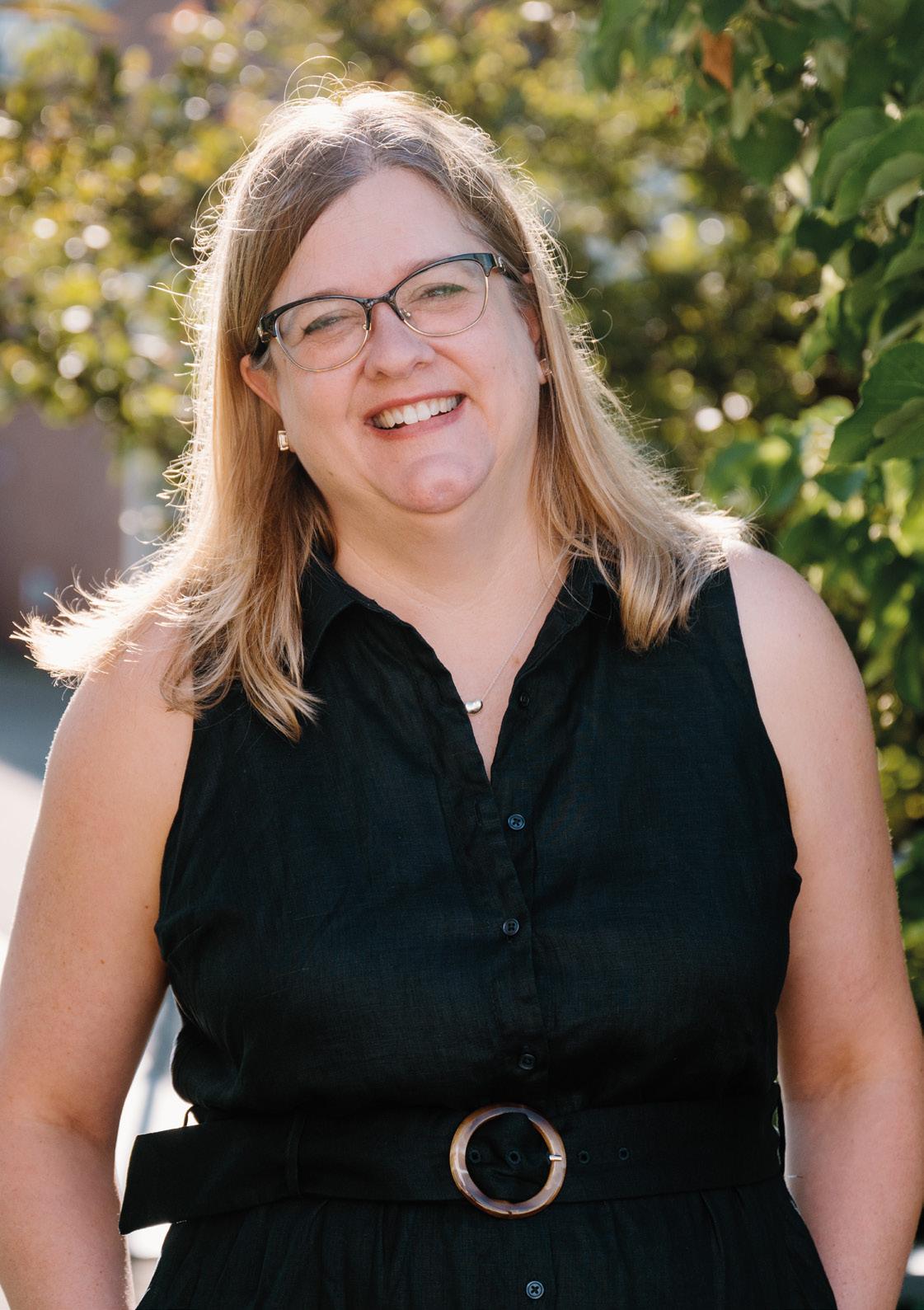
It was the Ontario curriculum but in an international context, with students from around the world. It taught me to look really critically at our curriculum to think about how it makes sense in a global context.”
Her boyfriend from Ontario joined her in Singapore after her first year and also secured a teaching job. They married a few years later. They then moved on to China, where they spent three years working at the Western Academy of Beijing, another international school. “I was also working for the International
Baccalaureate [IB] program. I was an IB Primary Years Programme trainer, and I would put on workshops on behalf of the IB program across the Asia-Pacific region, helping the staff to implement the program.” While in Beijing, Alison also had the opportunity to spend a year as a vice-principal, an opportunity that piqued her interest in administration.
After nine years abroad, the couple decided to return to Canada to raise their son, who had been born in Beijing, to be closer to family. Her husband’s family was in Toronto and hers was still in Kingston, so they decided on Cobourg to be close to both.
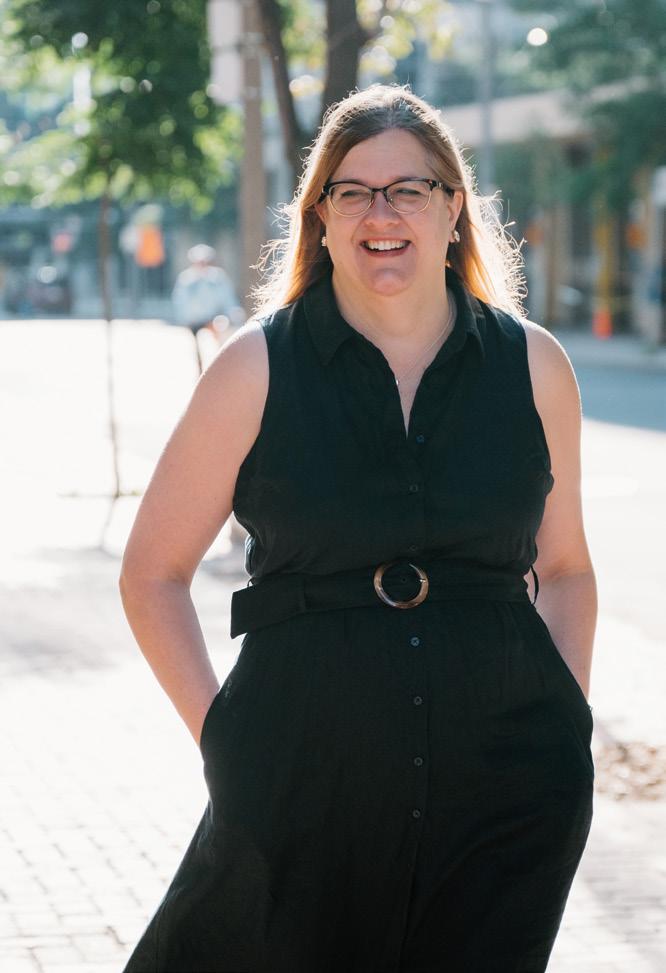
“When we came home to Canada, we had a choice to make. We had taught in international private schools for nine years, but we didn’t want to work in a private school at home. Instead, we made the very purposeful decision to work in public education, because we both believe in the importance of the public education system in Ontario.”
Alison got a job as a vice-principal with the Kawartha Pine Ridge District School Board, working between two small schools. After three and a half years, she was promoted to be principal at another small elementary school. Over 12 years as a principal, she has worked in a variety of schools across her school board.
It was also during this time that she first became involved with the OPC. It started with a desire to connect school board policies with the real world. “Too many procedures were reflective of the disconnection between the board office and the reality of what happens in schools. So I thought my voice could be used to deal directly with the board as a member of the local OPC group.”
While on the local executive, she became heavily involved with the Terms & Conditions work. “I wanted to better understand the contract and how the process of negotiating a contract worked. I wanted to make sure that my colleagues got the supports we needed and the contract that we deserved.”
Alison was then asked to step into the role of OPC Provincial Councillor by her local colleagues. Following two years in that role, she was appointed to the Provincial Executive, serving in several roles there over five years. In 2023, she decided to run for the president’s position. “For me, my path in public education and with the OPC has really been about service and improving public education. I have 10 more years to work in schools, 10 years until I retire. And I want to represent my colleagues across Ontario, and do the work to make things better. It’s an opportunity to have skin in the game and show up and see what we can make happen.”
Our work is critically important. The work we do serving students, our school communities and public education is essential.
As she prepared for her year as president, Alison identified several goals she wanted to accomplish. “I’d start with our contract. We need one that is fair and deals with some of the issues that we have been fighting for, for years. Since I’m very invested in terms and conditions locally and provincially, securing a good contract that addresses some long-standing issues is really key.
“Another important goal for me is wellness for principals and vice-principals. In many districts, we are very isolated in a lot of schools. We are alone, we’re doing difficult work, we don’t have a neighbour down the road or often a vice-principal in the office next to us. The work is hard and it’s lonely. I worry about my colleagues in schools, and I want to look at how we can support principals and vice-principals better. What do we do when we’re onboarding new administrators and how do we support them through their careers? How do we build networks? What more can we do?
“So much of our work has to do with the wellness of principals and vice-principals across this province. We are very, very tired. It has been a sprint from the time COVID arrived until now. I am desperately worried about school leaders across Ontario. We know that they’re struggling, and we need to do more and figure out new ways to support them on the job.”
With a new Minister in the role, many of Alison’s goals for the OPC and our Members hinge on meeting with her and her staff to make sure they are aware of the current challenges in our schools. “I really want to develop a good working relationship with the new Minister, as well as the people in the ministry. We are the ones who know what’s happening in schools. We need to ensure we’ve got a relationship that allows for us to go to them with issues and concerns, and also allows and encourages them to come to us and say, ‘Hey, we’ve got these issues; what do you think?’ It’s about having a real relationship that allows for those conversations.
“One of the key roles of the president is to advocate for public education in Ontario. And the true gift of this position is that until June 2024, I was working as a principal in a school. I very much know the reality. I truly understand what it’s like to be working in a school right now and what is actually happening in schools across Ontario.”
Speaking of the reality in schools, staff shortages continue to be an issue affecting instruction, safety and well-being for both students and staff. Although the OPC has made many efforts to advocate on this issue and to share data and proposed solutions, the government has yet to address this in any meaningful way. “With everything that we do, I want to look for solutions. Any time we can secure one more person working in a school, get one more job filled, that’s a win. That’s a success. So let’s start talking more with the government, focusing on the solutions that are working and sharing our ideas.
“How are we addressing the teacher shortage? What are we doing to support educational assistants joining the workforce? How are we allowing people with different levels of training to enter into roles that support our schools? While having big conversations is important, we also need to start talking on a smaller scale about what is already working in some districts. What can we learn from those districts?”
Away from school, Alison is the proud mom of two kids. Harry is in Grade 11 and Lucy is in Grade 9, both attending their local high school. Her husband, Greg, is an elementary school principal, which makes their jobs both a personal and a professional priority. Alison also enjoys reading, going to the family cottage and engaging in her kids’ various activities.
Her career in public education has cemented Alison’s view about the importance of the system. “Our work is critically important. The work we do serving students, our school communities and public education is essential. The power of public education can’t be understated. It is so significant to Ontario, and has the ability to right historic wrongs and change our society.
“And while I acknowledge that at this moment it is exceptionally difficult, we need to keep going, taking care of ourselves and doing the best we can – because I do believe that we will come through it. I believe it will get better in public education again. And I think it’ll happen in my career. I have 10 more years to do this job and I am confident the system will improve during that time. We just need to keep working to find solutions so that it starts to get better sooner rather than later.”
psweeney@principals.ca
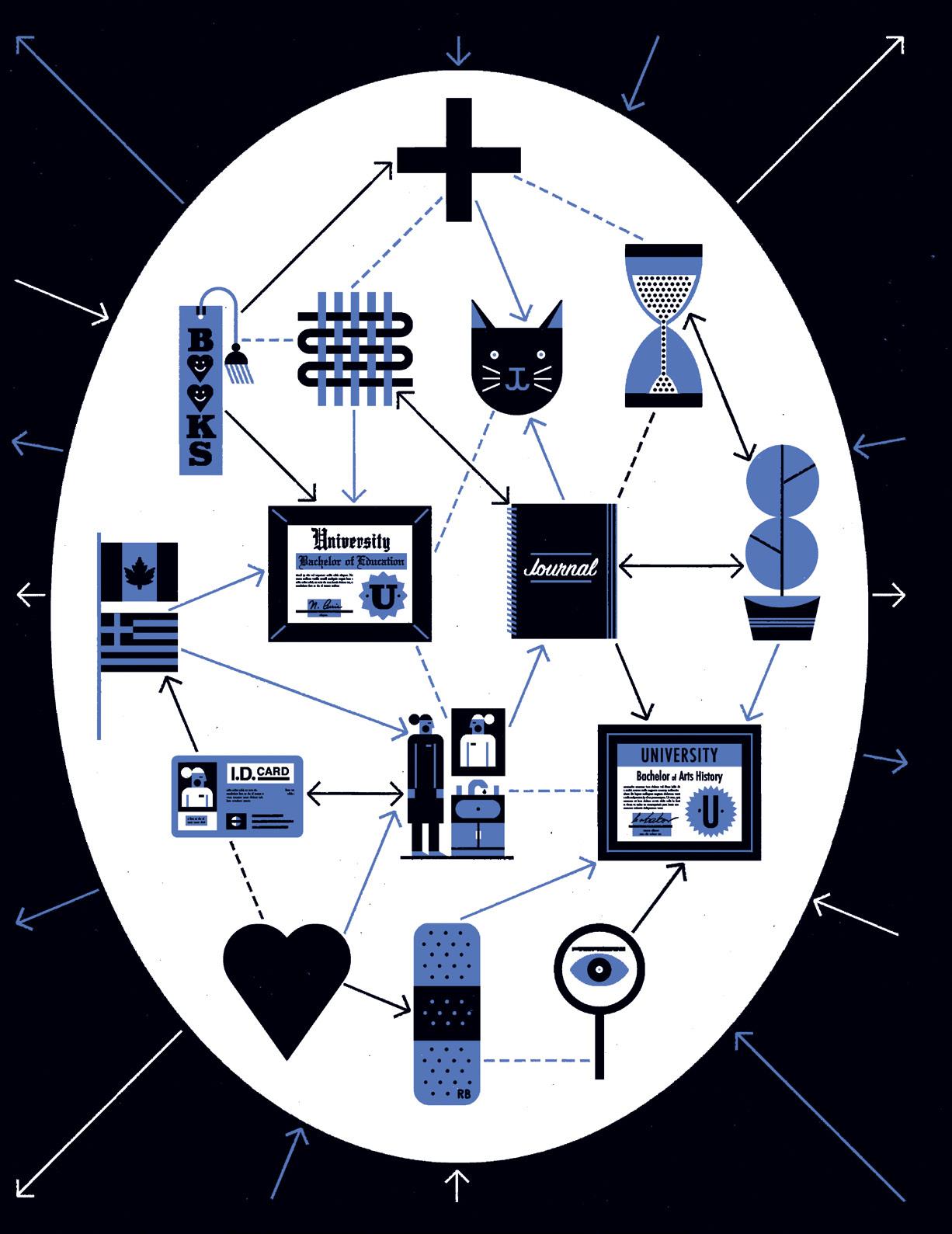
By Dr. Margaret Adam
Illustration by Raymond Biesinger
“Good teaching cannot be reduced to technique but is rooted in the identity and integrity of the teacher. Good teaching takes on a myriad of forms but good teachers share one trait; they are authentically present in the classroom, in the community with their student and their subject. They possess a capacity for connectedness and are able to weave a complex web of connections between themselves and their subjects and their students, helping their students weave a world for themselves.”
– Parker Palmer




Teachers are faced with the daily challenge of delivering creative, informative and professional programs to students that legitimize education in powerful, practical and theoretical ways. They play a significant role in the critical task of preparing students for the complexities, confusions and conflicts in an ever-changing world. Their capacity to positively influence and inform a more just and educated society may be diminished if they are not properly armed in their ability to create powerful learning environments for their students. This ability to produce high-quality teaching arrives through a complex weaving of pedagogical tapestry – a fabric intricately stitched and scaffolded in a fashion to create utter magic in the classroom. Reflecting on this notion of “pedagogical tapestry” leads to several questions. Does high-quality teaching occur with experience, time in the field, and a deep and sophisticated understanding of content knowledge or pedagogical knowledge? Does this expertise come with a clear vision for practice, with the knowledge of learners and how they develop, or a strong rapport and connection with students and the greater community? Is this proficiency in teaching curated from being culturally informed, inclusive, aligned with 21st century learning and committed to ongoing professional learning?
In an arduous attempt to define high-quality teaching, it’s important to first qualify it as a highly complex and evolving process. To better understand the vast array of skills, knowledge and attributes required for high-quality teaching and the components and dynamics involved in this critical task, a crucial dimension of teaching must be examined that I feel is the foundational, essential piece required for teaching excellence in the classroom. It is perhaps an area of education that has lay dormant in the world of teacher professional learning. For high-quality teaching to emerge in the classroom, we must cast a critical eye toward authentic practice. Authentic practice involves examining who we are as teachers and why we teach the way we do. This is not to dismiss the what and how of teaching − content knowledge and pedagogical knowledge, as they are equally critical components of high-quality teaching – but to identify the focus of this article on the domains of the who and why
A penetrating, reflective question we must ask ourselves as teachers is
If we do not know who we are as teachers, how can we know our students? And if we do not know our students, how can we teach them well?
How can high-quality teaching unfold if there is a weak connection to the self who teaches? Does the quality and development of the teacher not directly affect the way a teacher relates to their subject, their students, their colleagues and the world around them? Understanding and deepening the learning of who we are as teachers and who is in our classroom facilitates learning in an authentic way. A good grounding in self-knowledge for teachers is essential for good teaching, because I believe teaching emerges from within. To produce high-quality teaching in one’s classroom, we must first understand who we are in the process of our teaching. In Palmer’s The Courage to Teach, he suggests:
“Good teaching cannot be reduced to technique but is rooted in the identity and integrity of the teacher. Good teachers are authentically present in the classroom, in the community with their student and their subject.” (Palmer 1998, 14)
High-quality teaching develops through understanding how teacher identity relates to authentic practice.
Perhaps Erikson sums up the idea of teacher identity best, in Identity, Youth and Crisis, when he speaks of it as a chronological and changing concept. He opines, “Identity is not something one has, but something that develops during one’s whole life” (Erikson 1968, 108). The development of one’s identity is not static; teacher identities are formed and embraced as we progress through our teaching lives. With respect to developing a professional identity, Jenkins notes, “Identity is a process of

being or becoming and aspects of our personal identity strongly influence our professional identities and vice versa – the two cannot be disconnected” (Jenkins 2014, 21). In essence, we are always and forever in a state of becoming. As such, teacher identity is complex and ever-changing and involves both personal and professional aspects. Developing a solid understanding of teacher identity can empower teachers and improve authentic practice by aligning and shaping “who I am” with “what I do.” Garnering knowledge of one’s teacher identity requires self-awareness and teacher presence to cultivate authentic practice.
To bring presence to our work with students, it is essential to understand the interaction of being and doing in teaching. The concepts of being and doing can be visualized as two tubes that intersect perpendicularly. At any given time, we exist in both tubes. For highquality teaching to surface, teachers must be mindful of who they are being while engaged in doing with their students. As teachers, we can become exponentially absorbed in the doing part − or the what and how of teaching − the instruction and execution, the moving forward and figuring out how to get there. The doing aspect reflects our external experiences − the actions, behaviours and choices
we make as teachers. We can get lost in the doing – planning, acting and evaluating of teaching – unless we explicitly take the time to pause and listen to the wisdom that comes from within and from our students. For example, how many times do teachers ask a question of their students that they then answer themselves, instead of pausing and providing adequate time for the students to reflect in silence and formulate their own response? Jack Miller, in Education and the Soul, reminds us:
“Our education system has little respect for silence. In silence, we can learn to listen to voices of our students. We also begin to hear other people at a much deeper level. By slowing down and honoring silence and space, we develop a contemplative approach to life and thus nurture the soul.”
(Miller 2000, 136)
In The Heart of Learning, Steven Glazer explains how authentic practice builds relationship in the classroom and emanates from a place of compassion where there is something to be learned from listening – especially listening to others unlike you (Glazer 1999). The challenge for teachers lies in the being – being in the moment right where they are, right where their student is and becoming fully present to their needs. The being reflects the internal experience the teacher is having − their emotions, thoughts and feelings. To facilitate the being part of authenticity and to improve presence in the classroom, teachers can attentively engage in self-reflection and/ or contemplative practices such as meditation, journalling or other mindful activities to focus on who they are as teachers and what they value in their self and their teaching.
Teachers can attentively engage in selfreflection and/or contemplative practices such as meditation, journalling or other mindful activities to focus on who they are as teachers and what they value in their self and their teaching.

they value in their self and their teaching.

Teaching requires more than a collection of techniques − it requires a deep understanding of how to build a relational, authentic learning community.
Only then can the enactment of presence and mindful practice and its benefits begin to take on transformational dimensions in the classroom. I have often reflected on how curious it is that we call ourselves human beings rather than human doings.
teachers to carefully construct meaningful, professional experiences that expand their teaching repertoires by involving them in a range of reflective and dialogical activities that promote imagining, integrating and gathering meaning into the self that teaches. Experiences with colleagues, where rich dialogue centred on authentic practice, learning how to teach within the context of relationship, being present with their students and defining values they consider at the heart of their identity, could be transformative in the classroom and across the school.
Authentic practice and discovery of the teacher’s self require a collaborative approach and collective effort from the school leadership team and staff. A clear vision constructed on the value of ongoing professional learning in this area, and resources and time given to teachers to support it, must be prioritized in the school directives. Best practices should include an allotment of time that permits
The beauty of high-quality teaching is that it emerges differently in each classroom. What works for one teacher may not work for another because of the teacher’s authentic presence, individuality and unique style of teaching. Authentically present teachers, with a strong sense of self, can unite their subject matter and methods and their students in the flow of teaching. Teaching then becomes a way of being with their students. It becomes a way of being with their colleagues. Palmer, in The Courage to Teach, proposes, “The more familiar we are with our inner terrain, the more surefooted our teaching and living becomes” (Palmer 1998, 6). Quality time spent in the area of authentic practice gets at the
very core of who we are as teachers and of what sustains our work with our students. Teachers who are present and who value and build community in their classrooms foster open expression and development of authenticity for all. Teachers who are mindfully engaged in teaching within the context of relationship watch high-quality teaching occur magically in their classrooms.
A s the world of teaching progresses and becomes a more demanding and intricately complex profession, teachers need to be equipped with the essential skills, knowledge and attributes that will enable them to effectively contribute to the education of our children. Wilson et al., in their research report on teacher preparation, remind us that background in subject matter alone is not enough to equip teachers for their work in classrooms (Wilson et al 2001). Teaching requires more than a collection of techniques − it requires a deep understanding of how to build a relational, authentic learning community.
To prepare our beginning teachers, attention to the larger questions of purpose and authentic practice should be an integral part of their initial teacher education programs. Be-
ginning teachers consistently find themselves in the process of learning to teach, as they teach. This experience becomes even more confusing and complicated when combined with little knowledge of the self that teaches. At any point in their career, teachers would benefit from a continuum of professional learning opportunities focused on authentic practice in the classroom – learning about their teacher self in relation to their students. Palmer declares that if we continue to teach subjects like math and business as skills, techniques or mere methods to professional ends, we fail to provide a meaningful education
(Palmer 1998). We must take a more mindful, holistic and relational approach to teaching and learning for high-quality teaching to permeate our learning environments. Moreover, it is important for educators to self-reflect on who they are being in all aspects of their life − both personal and professional – as this may have a direct impact on their classroom instruction and also serves to influence their identities as educators.
Margaret Adam, PhD, MEd, BPHE-BA, OCT, is a sessional lecturer and faculty advisor in the Masters of Teaching Program at the University of Toronto and the Teacher Education Program at Brock University. madam@brocku.ca

Erikson, E. H. 1968. Identity, Youth, and Crisis.W.W. Norton & Company.
Glazer, S. 1999. The Heart of Learning: Spirituality in Education. Tarcher/Putman.
Jenkins, R. 2014. “Developing a Professional Idenity.” In Teaching Physical Education Today by D. B. Randall. Thompson Educational.
Miller, J. P. 2000. Education and the Soul. SUNY Press.
Palmer, P. 1998. The Courage to Teach: Exploring the Inner Landscape of a Teacher’s Life. Jossey-Bass. Whitworth, L., K. Kimsey-House, H. Kimsey-House, and P. Sandahl. 2009. Co-active Coaching: New Skills for Coaching People Toward Success in Work and Life. Nicholas Brealey.
Wilson, S., J. Ferrini-Mundy, and R. Floden. 2001. Teacher Preparation Research: Current Knowledge, Gaps, and Recommendations. A research report prepared for the U.S. Department of Education by the Center for Study, Teaching, and Policy.

Half-page ad for OTIP Insurance. Insurance built for all members of the education community. Get an online quote at OTIPinsurance.com/opc_magazine
By Robby Perrigo
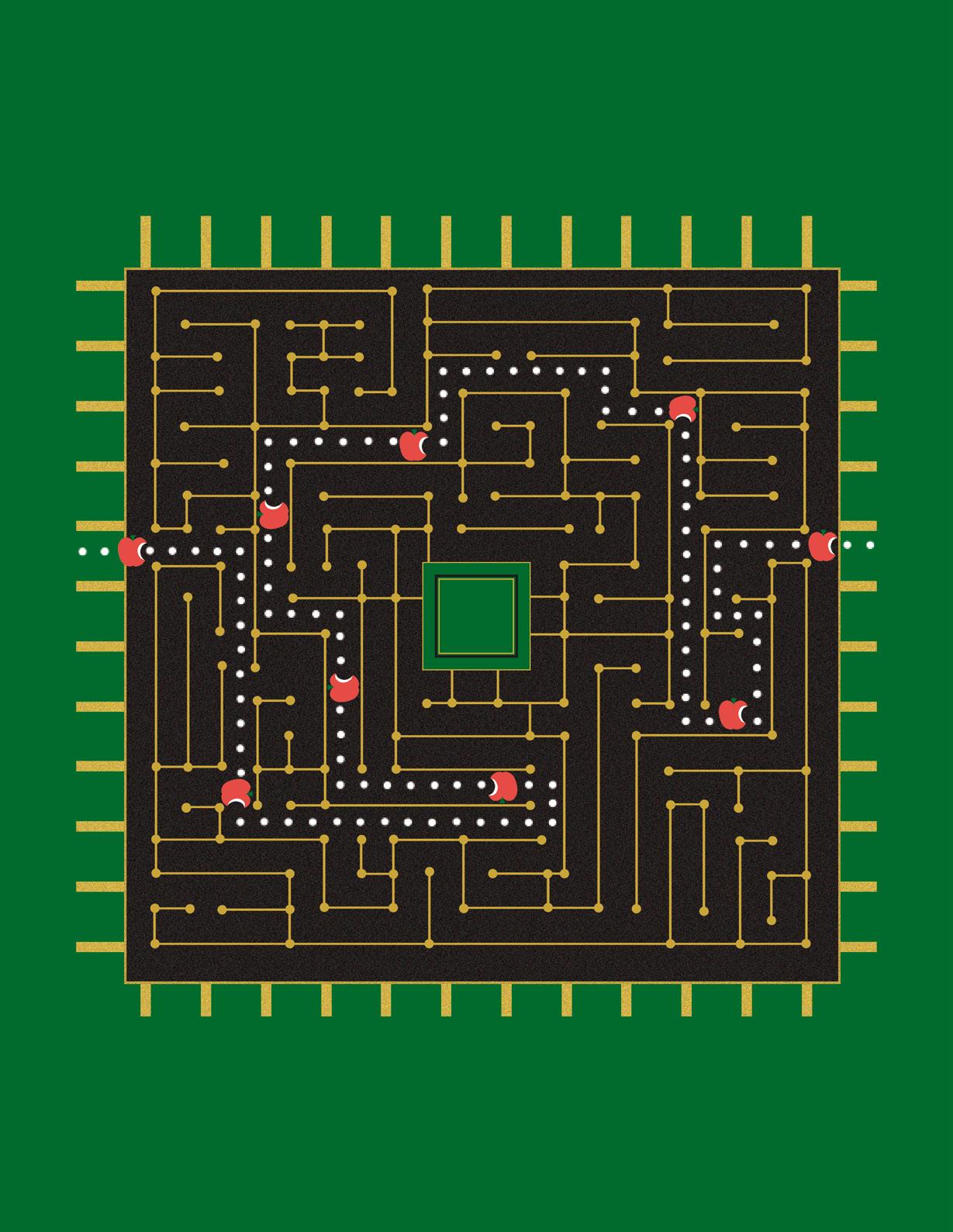
Asan educator, it’s nearly impossible to go a day without hearing a student or colleague discuss artificial intelligence (AI). Most of the time, it’s an anecdotal complaint from a staff member about students trying to pass off AI-generated work as their own, or a student bragging to their friends about how they used the technology to write their latest paper. This technology is becoming increasingly ubiquitous within the world of education, and very real concerns have been raised about the impact it has in the classroom on both student learning and how school leaders are changing their approach.
All of this begs the question – is this a net positive for student learning, helping subjects and tasks become more accessible, or is it beginning to do irreparable harm to the critical and creative thinking abilities of our students? It’s easy to make a case for either side of the argument, but as AI slowly becomes more ingrained within society as a whole, a reckoning time has come for educators to sink or swim in determining how to handle it in classrooms, and for administrators to establish a clear approach. Embracing it as a tool and establishing a comprehensive framework for its use as a learning tool is essential. Principals play a crucial role in leading this change by providing clear guidelines and support for teachers to integrate AI in a way that enhances learning, while maintaining academic integrity.
Before diving into the benefits of using artificial intelligence such as ChatGPT, the most well-known and popular chatbot as of this writing, it’s important to address some of the concerns around it. Educators bemoan the fact that students can simply feed in a prompt, such as an enquiry about what themes are presented within a scene of Macbeth, or three ways in which climate change is affecting our daily lives,

and suddenly find themselves with a fully written paper with diction reflecting that of a professional writer – or in this case, advanced software. This is a fair concern, but there has always been the possibility that an older sibling or a parent could help out, that the student could find the information on the Internet or, in the most extreme cases, that the student could pay someone else to write the paper for them.
This threat is not new, but AI certainly is far more accessible (and tempting) for those previously without the means to get someone else’s help. One strategy to address this challenge is to minimize homework, focusing on observed inclass work. School leadership could support teachers in revamping their courses by allocating more time for collaborative planning and targeted AI professional development. In an age where we are constantly battling against cellphones and social media for student attention, putting a greater emphasis on triangulation – conversation, observation and product – might be just what we need to raise the stakes so that class time is even more invaluable, and not wasted. Instead of AI being a taboo subject, administrators and teachers alike could acknowledge the benefits and drawbacks of AI software as a means of learning. With AI, someone who has never read Hamlet could now produce a compelling essay – superior to one written by an avid reader of Shakespeare – about why Hamlet is a tragic hero, but I care far more about how well they can discuss and elaborate on those answers in class. As difficult as it is for some of us to accept, the final product is becoming far less important than the process itself.
This is not to say that homework should go the way of the dinosaur, however, as there is plenty of research to support its use in classrooms. Elicit, an AI program dedicated to sorting through peerreviewed articles, summarizes several studies by saying that it “leads to higher test scores, better grades, and lower failure rates, particularly for
Is this a net positive for student learning, helping subjects and tasks become more accessible, or is it beginning to do irreparable harm to the critical and creative thinking abilities of our students?
grades, and lower failure rates, particularly for
struggling students.” Instead of rejecting homework completely, it’s time for schools to reframe it. Instead of writing an essay at home, students could use these programs to help them brainstorm or clarify a topic. I’ve had students write their thesis statements on Animal Farm in class, then allowed them to take it home and find compelling evidence that both supports their thesis and serves as a rebuttal to their argument. They then bring in this evidence from whatever source they want – AI or otherwise – and use it as a springboard in critical thinking activities that challenge them to defend their argument.
Modelling this in front of the class is particularly meaningful, as my students have enjoyed watching me, their English teacher, struggle to “beat” my robotic counterpart in a debate. It emphasizes that learning is more important than being right or wrong. One of the best ways to learn is through conversation, and while we don’t have the ability to have meaningful conversations on a regular basis with every single student, using this technology to encourage debate and critical thinking is a gift for shyer students in particular, or those who need a bit more time to reflect on their thoughts.
Instead of painstakingly reviewing an essay and spending hours ensuring that it isn’t plagiarized, we could instead be embracing students using this technology, and spending that time looking over their chat logs. Did the student simply put in one prompt and accept everything that was provided as an output, or did they go back and forth, having a full conversation that highlighted their own personal knowledge of the text? Did they properly revise the content provided to them, and reorganize it into the format requested by the teacher, or did they simply copy and paste it? These are the skills that are becoming increasingly relevant in all facets of the workforce, in almost every industry.
As terrifying as the prospect may sound, being able to be an effective prompt engineer – or, in simpler terms, being able to properly talk to the robot – is becoming more valuable than being able to complete the task yourself. Thanks to the Internet, the divide between knowledge experts and learners has already become easier to cross, and thanks to ChatGPT, that once large chasm is now no more than a small step away. Essentially, this technology de-streams our learners and is beginning make academia as a whole more accessible. Learning how to gather
Using this technology to encourage debate and critical thinking is a gift for shyer students in particular, or those who need a bit more time to reflect on their thoughts.
and organize knowledge efficiently from these programs, as opposed to simply trying to replicate its knowledge and output ourselves, is invaluable. Teachers and other employees should be less concerned about being replaced by AI, and instead be worried about being replaced by other workers who have learned to embrace it.
With all that being said, there is so much more to education and school than simply completing homework ethically and efficiently. AI opens up new possibilities for teachers to personalize their pedagogical approach in ways that previously felt far too time-consuming. For example, instead of spending hours annotating every single grammatical error in an essay, teachers can now partially outsource this task to AI programs such as Grammarly (while reviewing the output), and the teacher’s focus can instead be placed on providing meaningful overall feedback on the work. In fact, teachers can provide a few bullet points about a submitted piece of work, and then ask ChatGPT or other
programs to highlight how this feedback applies specifically to that student’s work. I think many teachers struggle with time management and guilt regarding these open-ended tasks, such as providing feedback or differentiating a worksheet, where we feel we could always do more to support our students. Rather than this guilt leading to burnout or apathy, we can use these programs to give plenty of feedback and use our time as experts who review and edit the output to ensure correctness. This software is also a valuable tool for preparing lessons, handouts and units in class. For example, I have the pleasure of teaching something I’m incredibly passionate about, film studies, at my home school. However, before I started to teach it here, this course had never before run at the school. Instead of painstakingly creating every single handout and brainstorming every single lesson plan, I regularly collaborated with AI in preparing the course. I knew I wanted to discuss the use of lighting and colours in Stanley Kubrick’s 2001: A Space
Being able to be an effective prompt engineer – or, in simpler terms, being able to properly talk to the robot – is becoming more valuable than being able to complete the task yourself.
Odyssey. I used ChatGPT to help me select specific scenes and create engaging, differentiated tasks that were appropriate for Grade 11 students. I used it to help me identify scenes that might be troubling for students, and to ensure my selected filmography reflected a diverse range of topics, genres and characters. I came up with an idea for an assignment, wrote it and then tasked the software to provide me with common questions or concerns students might have about the assignment. ChatGPT even helped me create a rubric, fully aligned with the Ontario curriculum. Honestly, it was the best research assistant I could ever ask for. However, it still needed that human touch to challenge its sometimes-ambitious output, and to align the work more closely to my class’s needs and abilities. I still spent dozens of hours preparing the course, but produced content that previously would have taken me hundreds of hours.
While it’s fair to say that most educators are still in the infancy of understanding and using AI technology, and are seeing only the tip of the iceberg in terms of its usefulness, this is also true of students. Principals can play a pivotal role in providing ongoing training and resources to ensure teachers and students alike are equipped to harness AI’s potential effectively. One overlooked aspect of these programs is how they will help to establish a more equitable learning environment for our highest-need learners and for students with disabilities. OpenAI, the company behind ChatGPT, just unveiled a series of updates in May 2024 that allow for numerous new ways to engage with the program. Not only can students enter a text prompt in dozens of different languages to ask questions, like a smarter search engine, they can now use their phone’s camera and verbal input to have conversational discussions in real time. One remarkable clip shown in OpenAI’s press release showed a blind man walking around, having ChatGPT describe the visual output to him, serving as his eyes. Remarkably, the AI tool was able to help him identify a taxi coming down the road and told him the precise moment to hail it.
This free technology can not only help with homework and academics, but it can now serve as a guide to help students navigate the hallways, identify facial expressions and even speak to a virtual therapist that is able to recognize tone and expression. It eliminates language barriers, allowing students to communicate in real time, and adapts to individual needs both socially and academically.
While programs such as ChatGPT are ripe for ethical debate and misuse, it’s time for us to accept that AI is a reality that we must try to embrace. As school leaders, principals have the unique opportunity to guide this transition, ensuring ethical use and maximizing the benefits for students. Educators have adapted to game-changing technology
before and integrated it effectively. We’ve survived calculators, computers, the Internet and cellphones. With strong leadership and a proactive approach, we can also navigate the challenges and opportunities that AI presents.
Robby Perrigo is an English, drama and film studies teacher at Earl of March High School in the Ottawa-Carleton District School Board. He served as the eLearning subject coordinator for the 2020–24 summer school program. robert.perrigo@ocdsb.ca
Grodner, Andrew, and Nicholas G. Rupp. 2013. “The Role of Homework in Student Learning Outcomes: Evidence from a Field Experiment.” The Journal of Economic Education, 44(2), 93–109. https://doi.org/10.1080/00220485.2013.770334
Yang, Angela, and Jasmine Cui. 2024, Feb. 20. “ChatGPT Still Reigns Supreme in Many AI Rankings, but the Competition is On.” NBC News. nbcnews.com/tech/are-stillsmarter-ai-s-way-keep-track-rcna136990#


By the Protective Services Team
When asked why they transitioned from teaching to school administration or system-level roles, most Ontario principals and vice-principals would cite their commitment to service, their pride in public education or their desire to positively impact a wider group of students, among other reasons. When the professional practice, knowledge or integrity of one of our Members is called into question, the emotional and, at times, physiological impact cannot be understated. Should a Member be named as a respondent in a formal complaint of workplace harassment or human rights harassment or in an application to the Human Rights Tribunal of Ontario (HRTO), the impact is often significantly exacerbated. The Protective Services Team (PST) receives calls from Members who face such complaints. The following article will explore the complaint and investigation process, and how the PST supports administrators who find themselves named as a respondent in a formal complaint.
In 2011–12, when the original version of this article was first published, the Ontario Principals’ Council (OPC) PST assisted 39 administrators who had been accused of harassment by a teacher (or teachers) or support staff. In the past five years, the occurrences of workplace harassment and human rights harassment complaints against our Members have significantly increased. In the 2023–24 school year alone, the PST assisted 85 administrators who were respondents to harassment complaints, and prepared watching briefs for an additional 38 who were named in HRTO applications. The steady increase in the relative proportion of findings against our Members over the past few years is of particular concern when compared against the number of complaints.
Despite our best efforts to reassure our Members that a complaint, in and of itself, is not a finding, the emotional toll on the respondent can be debilitating. Many of our Members who face such complaints find both their professional and personal lives negatively impacted. In some cases, Members require professional counselling to deal with their feelings of anxiety and betrayal. While it is almost inevitable that the “captain of the ship” will be the target of complaints from disaffected workers, our Members routinely begin a regimen of soul-searching, self-examination and self-doubt, often objectively disproportionate in the circumstances. Amygdala hijack, a “fight or flight” response to stress, occurs when that part of one’s brain senses danger (Holland and Gepp 2023). Emotional dysregulation, a term used to describe an emotional response that is poorly regulated and does not fall within the traditionally accepted range of emotional reaction (Bhandari 2023), becomes very real for leaders who pride themselves on a high level of professionalism, service to others and a “clean” track record throughout their career.
When school boards are made aware of workplace harassment or human rights harassment complaints, a threshold assessment should be conducted. These initial assessments are to determine whether the allegations, if true, would meet the definition of harassment and therefore constitute a breach of board policy or human rights. In recent years, empirical evidence suggests that an increasing number of allegations against principals and vice-principals are being investigated, despite not meeting the threshold test. The PST advocates for proper threshold assessments to be routinely conducted. Doing so would significantly reduce the volume of allegations to which our Members are expected to respond.
Even in the face of allegations that, if true, would not meet the definition of harassment, it is devastating for the administrator to
Many of our Members who face such complaints find both their professional and personal lives negatively impacted.
be characterized as a potential harasser. Why is this reaction so common?
For principals and vice-principals, the work they do leading student success, influencing communities positively and creating a legacy of an improved future for students and their families contributes to their self-image and self-esteem. Administrators can often find their confidence and self-esteem diminished when complaints occur, as they inevitably will, because they are at times obliged to make unpopular decisions in the role. In fact, when balancing the competing needs of the various stakeholder groups to which administrators are accountable, it is to be expected that one party or another will be unhappy with an administrator’s decision. Our Members may even face complaints when their decisions are challenged by an individual or group even though the Member followed policies and sought consultation with key school board officials.

The government has created protections for individual workers under the Occupational Health and Safety Act (OHSA). These are important and useful protections; yet, what sometimes is overlooked is the significant effect a complaint can have on the respondent. Members often face complaints of harassment that may be exaggerated or even fabricated, and this can serve to seriously impair a respondent’s enjoyment and participation in the workplace. Increasingly common in recent years is the employer’s decision to remove the respondent administrator from the workplace pending the outcome of an investigation. In contrast, complainants and witnesses, most of whom remain in the workplace when a respondent may be assigned to home or to an alternative location, continue to have access to one another.
The standard of proof in any workplace investigation is the civil standard of a “balance of probabilities,” which means an assessment that what is alleged is more likely than not to have occurred. This standard is often casually described as “half plus one” or “more than 50 per cent.” The ongoing interactions of the complainant(s) and witness(es) throughout the workplace investigation process can influence the evidence they provide, either deliberately (collusion) or unwittingly (unconscious bias), thereby potentially adding weight to the investigator’s determination “on balance” of findings against the administrator respondent.
The OHSA indicates that the normal exercise of supervisory duties does not constitute workplace harassment. Employment law
experts Samfiru Tumarkin LLP note that “not all difficult situations or interactions in the workplace are classified as harassment.” Constructive feedback, performance reviews, reasonable management actions and normal workplace conflicts, for example, would not necessarily meet the test for harassment.
It is useful for an administrator to anticipate situations where complaints most often occur. Where a teacher or other education worker has been disciplined or has received an unsatisfactory performance appraisal, it is to be expected that the union will file a grievance with a view, at minimum, to examine whether the administrative minutiae (timelines, steps and formal documentation) have been adhered to as required. It is not uncommon for an individual who has been challenged on performance or behaviour to react with a complaint of workplace or human rights harassment against the principal. Similarly, it is not uncommon for complaints to be filed against a principal in a new school placement when they attempt to implement changes to past practice, however appropriate the changes may be. Complaints may also be filed by those who struggle with change and/or who are accustomed to holding a strong position within the school. The latter situations most often relate to changes of assignment, grade, subject, classroom location and/or supervision duties. While every administrator has their own way of approaching a new assignment, rapid change without staff input or data can and often does lead to
The neutrality of senior management is required, as they are accountable to all parties in a workplace investigation process.
upset, potentially giving rise to complaints from members of staff, parents and students alike.
In an effort to support principals and vice-principals as they deal with concerns that have the potential to escalate into complaints, it is recommended that experienced administrators assist through mentoring of their new colleagues and be open and invite conversation when informal complaints occur, and that novice administrators reach out for that advice. Informal complaints to principals (about VPs), supervisory officers, directors and/or trustees, and the resolution of those complaints, need to be discussed and debriefed with one’s mentor to provide administrators with a suite of possible responses. This advice is of particular importance to those relatively new in their role; however, even the most seasoned of administrators can benefit from the support of a mentor. The establishment of supportive mentor networks, as well as a cadre of trusted colleagues, some of whom have experience responding to complaints, is something that some school boards across the province have found successful.
The process for resolving formal complaints, however, necessitates adherence to school board policies and procedures, and should be reviewed in professional learning sessions at local boards. The OPC can recommend resources to assist in this learning or provide workshops adapted to local policies. When an individual receives notification that they are a respondent in a formal process, confidentiality protocols require that the individual seek advice only from designated officials, which always includes the PST. One’s right to receive notification of a complaint, have access to related policies/ procedures and be made aware of the principles of procedural fairness are all things with which the PST can be of assistance.
It is not only the new administrator who is most liable to feelings of vulnerability. Even experienced administrators may become aware of their first complaint later in their career and mischaracterize it as either a failing in themselves, lack of support by their board or both. When a formal complaint is filed under a harassment policy, the board must remain neutral and allow the process to unfold or risk a loss in a grievance arbitration due to a challenge alleging that an investigation is biased. Our Members often make assumptions that the board’s senior officials should support, or even side with, their version of events. It is important to remember that the neutrality of senior management is required, as they are accountable to all parties in a workplace investigation process.
A member of the PST will provide guidance in the gathering of information to prepare a response. The board’s responsibilities
include the application of a threshold assessment; the engagement of a neutral, experienced and trained investigator; the provision of procedural fairness and due process; and the recognition of the administrator’s right to have representation. We also urge boards to use informal resolution mechanisms early in the process, whenever appropriate, to avoid having small conflicts grow into large ones. Although this approach is less common when an administrator is the respondent to a complaint, it nonetheless offers an opportunity to preserve relationships and a positive school climate that may not be possible when a full, and often acrimonious, investigation process ensues.
The PST consultants are available to any Member who is the subject of a complaint, whether formal or informal, to provide advice and, where appropriate, representation. We often have to reassure Members that it is not a mark against them to contact the PST. Rather, this is a service available to regular Members and Members on Term Assignment, designed to assist them to make good decisions and defend themselves when their decisions are challenged.
When it comes to labour relations, boards often assume that principals and vice-principals have a strong grasp of the management of those relations, even in the absence of any conversation with their administrators about the board’s position on a given element of the collective agreements. Consequently, board officials may not recognize that the filing of a grievance – however routinely – can leave an administrator feeling targeted and abandoned. A grievance process is a contract dispute between the signatories of the collective agreement: the union and the employer (school board). As such, the OPC does not have official standing in a grievance. The PST may offer guidance and advice on navigating a grievance process, but direct representation is not possible in these circumstances.
PST statistics reveal that, in the majority of cases, complaints of harassment against OPC Members are found to be unsubstantiated. Most complaints are indeed legitimate expressions of experience and perspective. The percentage of substantiated complaints has in-
creased somewhat in recent years, but the relative proportion of complaints that remain unsubstantiated should reassure principals and vice-principals that they are indeed captaining their ships through choppy waters in a fair, transparent and professional manner. Nothing can protect them from being named in a complaint, but there are plenty of resources – both human and informational – that can help mitigate the likelihood of a negative finding.
The OPC also offers many learning opportunities, through Protective Services, Professional Learning, and Social Justice and AntiOppression, that can be invaluable professional experiences and resources for avoiding, navigating and moving forward after workplace and human rights harassment investigations. Contact the PST (1-800-701-2362) for advice and support at the earliest appropriate stage. Continue to move forward, serving students, staff and school communities in confidence.
asayed@principals.ca
REFERENCES
Bhandari, S. 2023, July 19. “Emotional Dysregulation: What It Is and How You Can Cope.” WebMD. https://www.webmd.com/mental-health/what-is-emotional-dysregulation Holland, K., and K. Gepp. 2023, March 16. “Amygdala Hijack: What It Is, Why It Happens & How to Make It Stop.” Healthline. https://www.healthline.com/health/stress/ amygdala-hijack
Samfiru Tumarkin LLP. (n.d.). Workplace Harassment. Samfiru Tumarkin. https://stlawyers.ca/law-essentials/workplace-harassment

Quarter-page ad for TOA, IR-842 Portable speaker voice lift wireless system. Find out more at www.toacanada.com


By Aslini Briti, Sandi Cole, Laura Elliott and Dr. Beverley Freedman
In October 2023, a contingent of educators from the Dominican Republic, who were also members of Teacher Mentors Abroad (TMA), travelled to Ontario to meet with school and system educators, other TMA members and community partners. Their main objective was visiting classrooms and schools to see learning in action. TMA is a transnational, collaborative partnership between Canadian and Dominican educators. This article explores the Dominican team’s learnings and impressions of Ontario’s education system.
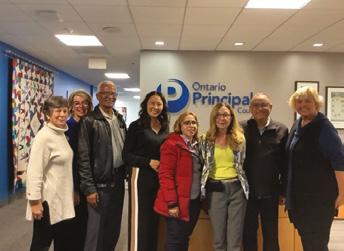
The Dominican team was interested in exploring mentorship and principal leadership, which led local members of their team to connect to the Ontario Principals’ Council (OPC). The OPC has a reputation as a world leader in principal support and development through local, national and international connections.
TMA began in January 2005, and its impetus was the hosting of a successful youth leadership camp in Hainamosa, an under-resourced community just outside the Dominican Republic’s capital city of Santo Domingo. Many Canadians are familiar with that country as a tourist beach destination, but most rarely venture beyond the resorts to interact with the local population. The country is Hispanic and has a rich history sharing the island of Hispaniola with Haiti.
Schools in this community, both public and private, faced challenges of being chronically under-resourced and over-crowded. Dominican teachers were intrigued by co-operative learning and other engaging instructional strategies used by the Ontario educators while working at the youth leadership camp. These Dominican educators wanted to learn more about these pedagogical strategies the Canadians were employing. Traditionally, Dominican students sit in rows and, given the dearth of resources and technology available, the focus was teacher centric. TMA was created to fulfill this request by the local Dominican teachers for Ontario educators to share their expertise.
Initially, TMA’s Dominican summer institutes focused on co-operative learning, and
on high-yield literacy and numeracy strategies. The response from the Dominican educators was immense gratitude for the opportunities to grow professionally, as this traditionally was not the “culture” of teaching in the Dominican education system. Attendance rapidly expanded from the initial sessions, through word of mouth from previous attendees. Now sessions have been provided for hundreds of Dominican teachers and administrators.
Dominican teachers take the time to attend TMA sessions during their summer vacation and the trips are self-financed. Like most educators globally, they are committed to their students and their learning. The emphasis for Dominican school leaders was more focused on management and running an effective school. Traditionally they were not intentionally visible, nor directly involved in capacity building. School leaders heard about the TMA sessions from teachers and expressed interest, and sessions were developed to build learning leaders.
Through TMA, Ontario educators volunteer their time and self-finance their airfare to design and deliver summer institutes for Dominican teachers and administrators building professional capacity. Recently, TMA has shifted its focus from delivering capacity building, supported by Dominican educators,
to intentionally developing Dominican educators as mentors. The lead comes from the Dominican Republic, supported by the Canadian TMA team. This way, the Dominican mentors can then provide pedagogical support to their own colleagues. It is more culturally appropriate and responsive to current issues, and is delivered by their colleagues.
That is the essence of a true collaborative partnership. Leadership is developed, supported and refined. The Dominican mentors are connected throughout the year, via Zoom sessions, with Ontario educators, sharing resources in Spanish or translating evidencebased practices into Spanish. The TMA Program Committee’s information about summer institutes for Canadian educators is available on the TMA website.
TMA board members arranged a sharing session in October 2023, at the OPC’s Toronto office. The Dominican team was pro-
vided with an overview of the OPC’s programs with a focus on mentorship. The OPC’s goal is to provide principals with the professional services and supports needed to provide exemplary leadership in public education. That is what intrigued the Dominican team. They were impressed by the OPC team’s knowledge, skills, expertise and willingness to share.
One of the members of the Dominican team was Aslini Brito, a former Dominican director of education, a TMA Dominican mentor and the current lead in a national leadership mentorship program. Aslini reflected on what he had seen and learned while visiting
These centres are true microcosms of a system that strives to serve all students, regardless of their background or circumstances.

Ontario classrooms. The following, in italics, are his own words.
Aslini refers to Canada as a country whose commitment to inclusion, diversity and collaboration has allowed all students, regardless of their origin or circumstances, to reach their full potential. During my stay, my intention was to fully immerse myself in the richness and diversity of Ontario’s educational programs. My first stops included visits to primary and secondary schools in urban and rural areas. These centres are true
microcosms of a system that strives to serve all students, regardless of their background or circumstances. Canadian teachers strove to create an inclusive environment where every student felt valued and respected.
I observed inclusion of and supports for students with educational needs, including a wide variety of didactic and pedagogical resources, such as infrastructures with intentional spaces, emergency systems in operation, properly labelled defibrillators in strategic areas and first aid kits with anti-allergy medications. Classrooms were suitable for the learning needs of the students, equipped with various types of seats and tables, and interconnected sound systems. Transition classrooms, gyms, sports fields, cafeterias that function simultaneously as dining rooms and theatre areas, workshops, laboratories, as well as large outdoor fields, become an authentic window to observe culture and society in constant evolution.
On this journey of discovery, we enter Canadian classrooms, laboratories of diversity and inclusion, where prejudices are demystified and differences are embraced. We meet Indigenous students who long to become scientists and neurosurgeons, and young people with diverse ethnic, political and religious backgrounds who find in Canada a place where their identity is respected and valued.
Plus, we learned the inspiring story of Alicia Smith, whose journey ranged from adversity to becoming a Special Olympics figure skater. Alicia is currently a member of Team Ontario that will participate in the 2024 Special Olympics Canada Winter Games in Calgary that reflects the transformative power of an inclusive culture.
I participated in one of the classrooms where the presence of two students of Indigenous origin caught my attention, which moved me very much, considering that in the Dominican Republic, due to its historical reality and geographical position, we do not have that opportunity. The

young women were between 15 and 17 years old. They told us that they came from communities very far from the school but thanks to a family from around their educational centre that gave them a home, they managed to obtain the opportunity to study. Among the things they shared, they expressed their desire to become professionals.
Aslini referenced parents and community members who volunteer in schools and classrooms, but also the TMA educators, board members and supporters who volunteer their own time and funds to make a difference.
Volunteering in the Canadian education system plays a critical role in addressing a wide range of social challenges and promoting student well-being. Volunteers in the field of education do not just inspire with words; they back up their words with concrete actions, which are clearly reflected in the interaction of people in Canadian society.
My planned conversations with the executive director of the OPC allowed me to gain deep insight into the policies and strategies that have driven educational success in the province. Digging deeper into the Canadian education system, I discovered two crucial elements that formed the foundation of its educational excellence: mentoring and partnerships.
Canadian classrooms not only serve as places of learning for students, but also for teachers. Mentoring does not focus exclusively on the transmission of knowledge and experience, but also provides emotional support and personalized guidance. The relationship between mentor and mentee becomes a catalyst for teachers’ growth, strengthening their pedagogical skills and their ability to maintain a positive classroom environment.
Canada has emerged as a beacon of diversity, inclusion and educational quality. Every Canadian classroom I visited, every story of improvement I heard, and every gesture of support and commitment I witnessed, reminded me of
... we enter Canadian classrooms, laboratories of diversity and inclusion, where prejudices are demystified and differences are embraced.
the importance of promoting equal opportunities in education.
The lessons learned here will not stay in Canada, but will resonate in my own country, the Dominican Republic. Canada has been a beacon that has shown me how education systems can be drivers of social change and how diversity can be an asset rather than a barrier. Through inclusive, quality education, we can create a path toward a more hopeful and just tomorrow.
As a writer, my commitment is to share these lessons and inspiring stories with the world, inspiring others to follow Canada’s example. But I also urge all of us to remember that while the Canadian education system is a beacon, each nation must chart its own path based on its unique history, culture and challenges. Let’s take inspiration from Canada, but let’s build our own horizon of change.
The OPC was generous in sharing time and resources in terms of their mentorship initiatives. Recently, TMA recently was invited to partner in a national Dominican mentorship initiative, Acción Empresarial por la Educación or EDUCA. Ontario educators in partnership with their Dominican colleagues continue to make a difference.
You can hear in Aslini’s own words how impressed he was with the professionalism and dedication of Ontario’s educators. The commitment to equity, diversity and inclusion was evident. We talked about Truth and Reconciliation and the multigenerational impacts of the residential school system. The Dominicans understood that we too are deepening our commitment to equity, diversity and sovereignty. As educators and learning leaders, we understand that much still needs to be done. It is important to remember that compared to other spaces and places, our schools and classrooms are inviting and engaging places of learning. Aslini ended with the reminder that each nation, in fact each district, is charting a unique pathway. It is in the collective that collaboration, coherency, mutual respect and shared accountability enable educational change.
Dominican educators and students will ultimately benefit from the expertise shared by the OPC as mentoring skills are developed and programs implemented across many districts. We all look forward to improved educational outcomes over the upcoming years.
The OPC offers some global learning opportunities and engages in some international work, including research that brings new perspectives and provides a space for broader collaboration and reciprocal learning. International Exchanges allow principals and vice-principals to job-shadow a partner in another country through a one-week program that is reciprocated with a similar visit from the designated partner to Ontario. Education Study Tours can be arranged for school and system leaders from other countries to visit Ontario and learn more about our public education system. This is also an opportunity to hear about diverse systems and approaches to learning across the globe. International
School Leadership provides educational teams and organizations globally with leadership development programs and training tailored to the local context and learning needs.
Aslini Brito, MAG, is a former director of education in the Dominican Republic, who is now a pedagogical technical adviser for the Ministry of Education. Aslini is principal of the Education School of the Universidad Católica del Cibao (UCATECI) and coordinator of mentors for PEECEI, EDUCA.
Aslini.brito@minerd.gob.do
Sandi Cole is a retired educator and a former student services coordinator for the York Region District School Board. Sandi has been vice-chair for Teacher Mentors Abroad and chair for its programs committee. She has led many successful TMA summer institutes to the Dominican Republic.
sandicole2020@gmail.com
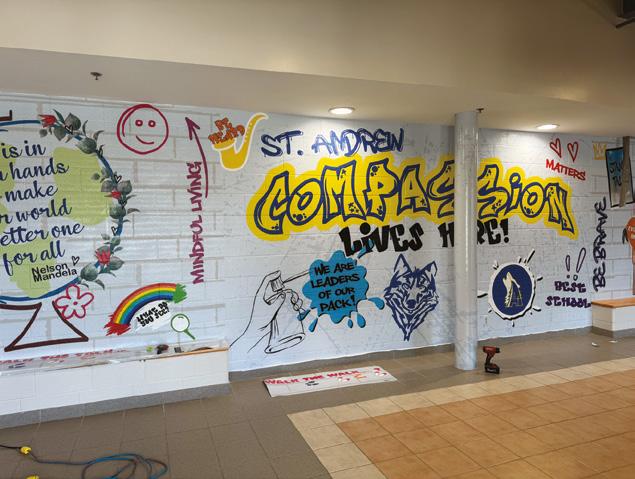
Laura Elliott, BSc, BEd, MEd, MBA, is the executive director of the Council of Ontario Directors of Education and an honorary board member for Teacher Mentors Abroad She is a former director of education for the Thames Valley District School Board. laura@ontariodirectors.ca
Beverley Freedman, BA, BEd, MAT, MEd, D.Ed., OCT, is an education consultant. She was the former superintendent of programs for the Durham District School Board, and, former executive education officer at LNS EDU. She is now a senior mentor for OISE at the University of Toronto and a board member for Teacher Mentors Abroad.
bevfreedman@rogers.com
NOTE: The team from the Dominican Republic included Aslini Brito, a dynamic educator with the newly formed TMA Zona Cibao mentor team; his wife, psychologist Justina Rodríguez; and José Lopez, a TMA board member and Dominican Republic resident. The Dominican team spent a week visiting Ontario classrooms and schools, mainly in the Durham District School Board.


November 20
Equity Connections – FREE for Members
Co-constructing Leadership for Equity
Four sessions from November 2024 to April 2025
Registration deadline: Nov 6
26
Professional Learning Network – Vice-principal Perspectives – FREE for Members
27
Webinar – Advanced Strategies for Integrating Culturally Responsive Artificial Intelligence in Education – FREE for Members
December
10
Affinity Group Meeting –South Asian Administrators Group
11
Indigenous Connections –FREE for Members
President Alison Osborne president@principals.ca
Executive Director Nadine Trépanier-Bisson ntrepanier@principals.ca
Equitable and Inclusive Schools, Part 1 –Administrator Focus – New AQ! Starts in January – Dates to be determined
22
New Administrator Support Program Join starting January 22
Registration deadline: January 13
25
Mentoring Qualification Program
Registration deadline: January 11
27
Principal’s Development Course (PDC) Module 13: The Principal’s Role in Mental Health Awareness and Trauma-informed Schools
Registration deadline: January 13
Principal’s Development Course (PDC) Module 3: Leading an Equitable and Inclusive School
Registration deadline: January 13
29
Affinity Group Meeting –Persian Administrators
Communications Peggy Sweeney psweeney@principals.ca
Protective Services Aditi Sayed asayed@principals.ca
29
Webinar: Legal Issues Connected to Managing Relationships with Staff –FREE for Members
31
Special Education for Administrators Qualification Program
Registration deadline: January 17
6 – 8
Provincial Council Meeting
19
Indigenous Connections –FREE for Members
21 – 23
Supervisory Officer’s Qualification Program Module 2 – Leadership and Organizational Change Perspective or Module 4 – The System Perspective
Registration deadline: January 24
26
Webinar – Conducting Bias-aware Investigations
Equity, Diversity and Inclusion Irfan Toor itoor@principals.ca
Professional Learning learning@principals.ca
Membership Services membership@principals.ca
General Inquiry admin@principals.ca
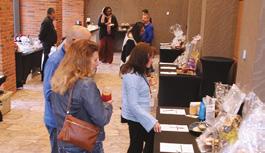




We held our annual Silent Auction at our Provincial Council Meeting on May 3, 2024. The auction was a huge success, raising over $7,300, donated to Feed Ontario and Student Nutrition Ontario to provide meals across the province.
Thank you to the 31 OPC Local Districts that donated items for the auction.












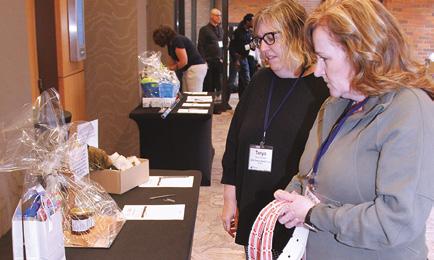











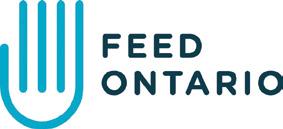
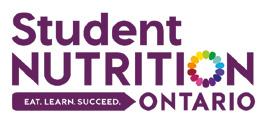




Full-page ad for OPC Annual Silent Auction. We held our annual Silent Auction at our Provincial Council Meeting on May 3, 2024. The auction was a huge success, raising over $7,300, donated to Feed Ontario and Student Nutrition Ontario to provide meals across the province.















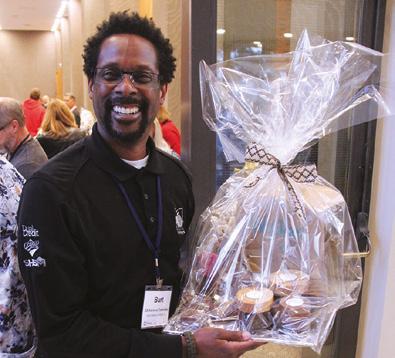







Thank you to the 31 OPC Local Districts that donated items for the auction.
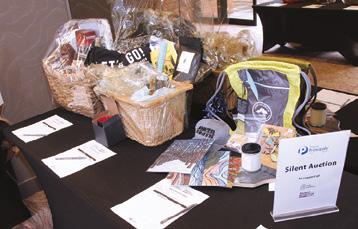














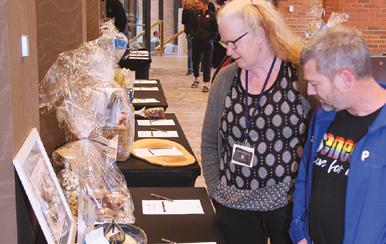

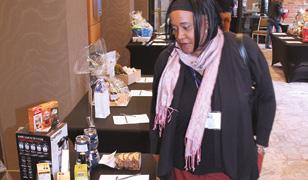


Feed Ontario is the province’s largest collective of hunger-relief organizations. Together with food banks, industry partners and local communities, they work to end hunger and poverty by delivering fresh and healthy food, developing innovative programming, and driving change through research and advocacy. www.feedontario.ca
Student Nutrition Ontario advocates for policy, facilitates partnerships and shares best practices for healthy food options. Through province-wide programs, they engage school boards, public health units, communities and parents to support school nutrition programs that enable students to eat, learn and succeed. www.studentnutritionontario.ca
We want to extend our congratulations to OPC Members who retired during the 2023-24 school year.
Adele LeMaire
Simcoe
Andrew Nordman
Ottawa-Carleton
Annette Oliver
York Region
Bradley O’Neil
Upper Canada
Brian Playfair
Dawn Addison
Peel
Dean Fournier
Upper Canada
Janet White
Durham
Jason Pratt
Full-page celebrating retirements. Congratulations, celebrating retirements. We want to extend our congratulations to OPC members who retired during the 2023-24 school year.
Deanna Heron York Region
Deborah Barbon
Grand Erie
Don Lewis
Hamilton-Wentworth
Carol Richards-Sauer
Toronto
Carol-Anne Sloan
Upper Grand
Catherine Norrie
Rainbow
Chrisanthy Nicolaides
Hamilton-Wentworth
Claudia Fischer York Region
Curt Davidson
Simcoe County
Dave Robson
Durham
David Dick Algoma
David Van Laecke
Grand Erie
Upper Canada
Ed Haley Algoma
Elizabeth Rainer
Ottawa-Carleton
Erica Gillespie
Waterloo Region
Gary Lew
Durham
Gaynor Kondric
Ottawa-Carleton
Helga Curry
York Region
Jackie Stafford
Toronto
James Norrie Rainbow
Jane Inglis York Region
Thames Valley
Jenny Seto-Vanderlip
Hamilton-Wentworth
Jo-Anne Giertuga Lakehead
Jodie Schnurr
Halton
Judy Kramer
Toronto
Karl Wunderlich
Kawartha Pine Ridge
Kelly Colter Algoma
Leslie Wright
Trillium Lakelands
Lisa Handiak
Toronto
Lori Rice
York Region
Lorraine Brown
Thames Valley
Mark McMath
Waterloo Region
Mary Zwolak
Niagara
Melina DiCarlo
Thames Valley
Michael Kanalec
Toronto
Neil Ekels
Peel
Sharon White
Toronto
Shelley Potvin
Ottawa-Carleton
Silvia Speck
Upper Canada
Steven Wynen
Upper Canada
Suelyn Cheong York Region
Susanne Fata
Toronto
Tammy Somerville
Halton
Tracy VanDenBossche
Lambton Kent
Vinita Mongia
Peel
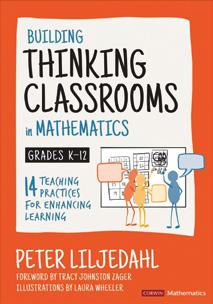
By Peter Liljedahl Corwin Mathematics
ISBN: 9781544374833
Reviewed by Mervi Salo
The Ontario Ministry of Education’s Math Achievement Action Plan emphasizes the enhancement of math learning across all school boards. Schools are encouraged to adopt
the High-Impact Instructional Practices in Mathematics to support this initiative. In this context, Peter Liljedahl’s Building Thinking Classrooms in Mathematics is a valuable resource for educators looking for models of these practices. The book outlines 14 practices grounded in extensive research and real-world classroom observations that closely align with the ministry’s high-impact practices.
Liljedahl’s work is particularly relevant for educators transitioning from the traditional, “I do, we do, you do” teaching method that still dominates many math classrooms. His approach includes rethinking physical classroom spaces and group dynamics to foster greater engagement and deeper thinking. For example, Liljedahl suggests “de-fronting” the classroom and utilizing non-permanent vertical surfaces for problem-solving to enhance student interaction and participation. He also highlights the importance of random group assignments to prevent students from falling into predefined
roles, thus encouraging every member to contribute actively. Additionally, Liljedahl offers a compelling analysis of the questions that stimulate student thinking. He categorizes questions into three types: proximity, stop-thinking and keep-thinking. Educators can maintain a classroom environment that promotes sustained enquiry and rigorous intellectual engagement by focusing on fostering keep-thinking questions.
Building Thinking Classrooms in Mathematics is designed to be accessible and practical. Each chapter is clearly written and concludes with FAQs and summaries to aid teachers in reflecting on and applying what they have learned. These features make the book an excellent tool for professional development. However, while Liljedahl provides a robust framework for pedagogical change, it is crucial to note that these practices should be complemented by strong content knowledge. To be truly effective, math teaching reforms must be paired with a solid understanding of mathematical concepts and student learning progres -
sions. This is particularly important in elementary education, where foundational math skills are developed, and in secondary schools, where educators must be aware of the complexities of student learning continua. For principals and education leaders considering this book for staff development, it is essential to view it as part of a comprehensive approach to math education that includes both professional learning regarding pedagogical teaching practices and deep content knowledge. This dual focus will ensure that classrooms engage students and equip them with a deep understanding of mathematical concepts. As Liljedahl notes, the ultimate aim of building thinking classrooms is to cultivate engaged learners who are prepared to tackle any mathematical challenge. This dual focus on innovative practices and content mastery will ensure that students are engaged and well-equipped with a thorough understanding of mathematical principles.
Mervi Salo is a centrally assigned principal of instructional innovation and equitable outcomes: mathematics, science & technology, STEM, robotics and the arts (K–12) at the Toronto District School Board. mervi.salo@tdsb.on.ca

“Get up, stand up, stand up for your rights! Get up, stand up, don’t give up the fight!” – “Get Up, Stand Up” by Bob Marley and the Wailers
I can’t help but hear and feel the positive vibrations, melody, messages and passion of the legend Bob Marley reverberating through me each day. Every instrument, rhythm and lyric forged together perfectly, creating songs and albums rooted in love, hope and liberation. Music has been a huge part of my life. As a youngster, the sounds of reggae and soul brought life to our home and joy to our car. Even in silence, it often continued its cadence in our heads as we sat in silent reflection. This not only “satisfied our souls,” but one could also argue that music was a healing agent for the emotional woes we faced. My parents may not have known this at the time, but my anti-oppression journey began on the living room floor, the moment the turntable needle danced on top of the vinyl, giving birth to baselines thumping our walls as if they were extensions to our own hearts beating in our chests.
As a Black Canadian male born to Jamaican parents, there was an extensive yet simplistic song that was already written for me. However, just as the metronome helps to keep steady timing, music has been the metronome for my life, ensuring that each time I began to drift out of tempo and into that false, oppressive narrative, I would never accept the song as my life’s score. “Stay on beat, Sean.” As I grew, my love for music evolved. It wasn’t vinyl in the living room anymore, but now hip-hop on cassette tapes with new perspectives, voices and stories helping me to compose my own song. When I accepted education as my pathway, I also accepted that I needed to help cultivate a learning environment where students’ authentic songs could be accepted, listened to and acclaimed by all. “It’s never what you do, but how it’s done.” – “No Idea’s Original” by Nas.
Hip-hop artists’ voices transform into instruments, authentically and poetically sharing messages through emotional narratives, offering those who have been hidden away the opportunity to finally be seen. The melody of anti-oppressive education whistles the same song. Like hip-hop, we need to continue to normalize our practice, widen our reach, strengthen our persistence and grow our allies. “I keep my head high, I got my wings to carry me, I don’t know freedom, I want my dreams to rescue me.” – “Apparently” by J. Cole
The same melodies that inspired me as a child continue to keep my timing in rhythm today. Despite the pressures of those who attempt to hit “pause” or “rewind,” I continue to proudly “push play.” Our commitment must remain unwavering to ensure no song is misrepresented, unheard or skipped over. “It’s beauty in the struggle.” –“Love Yourz” by J. Cole
Sean McCormack is the system lead of antioppression at the Durham District School Board. Sean is proudly Black, rooted in connections and inspired by change. sean.mccormack@ddsb.ca



Empathize with real people and their needs
Rooted in the proven framework of Design Thinking, it will transform an ordinary classroom into an innovation hub. Through immersive, hands-on projects and real-world challenges, students will: Define problems Ideate creatively to generate countless solutions
Collaborate effectively in teams



• Empower your students with easy-to-use graphic design tools and ready-made templates.
• Receive expert training and support from our team of yearbook advisors and project managers.
• Access to our comprehensive library of tips and tutorials for your committee.

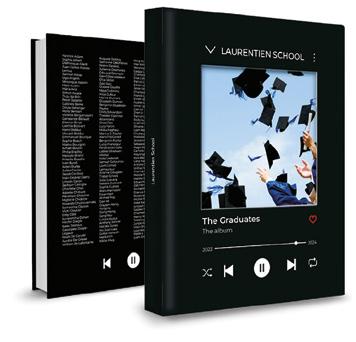
• We pride ourselves on full transparency with clear contracts and no hidden fees.
• Your data will not leave Canadian borders. (FIPPA Compliant)
Digital distractions pose a significant challenge to maintaining focus during study sessions and completing tasks. Conversely, having a physical planner open on your desk can enhance concentration and keep students engaged with critical assignments and studies.
Our student planners are printed on 100% recycled paper, proudly made in Canada, with the smallest environmental footprint in North America.


